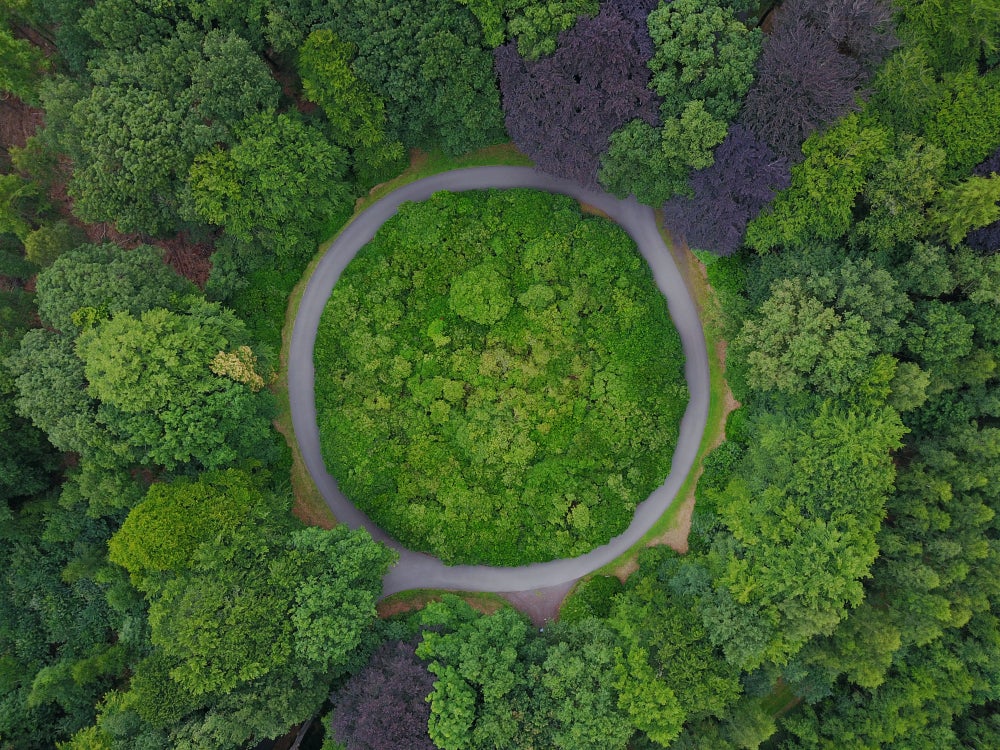When we talk about moving to net zero and averting dangerous climate change, there is a vital piece missing from that conversation: how much we consume.
Decarbonising our energy system and other parts of our economy is crucial. But each new solar panel, wind turbine or lithium battery relies on non-renewable raw materials, such as steel and rare metals. These materials are usually mined, manufactured, used and then thrown away. They often cost the communities from which they are extracted, rather than provide secure and decent jobs and livelihoods. By leaving consumption out of the conversation we are ignoring some of the key challenges to countering climate change.
Zero Waste Scotland’s research shows that four-fifths of our carbon footprint comes from raw material use. Each person in Scotland consumes around 18 tonnes (t) of raw materials each year, when the sustainable amount is closer to 8t. Much of the materials and goods we consume have to be imported, adding yet more embedded carbon to the process.
The damage also goes beyond climate change. The extraction of raw materials is responsible for an estimated 80 per cent of biodiversity loss – the other great environmental crisis of our time – and 85 per cent of water stress (when demand exceeds supply). Then there are all the social and human rights challenges created by the process of extraction – for example, the number of workers who are exposed to dangerous conditions, often for poor pay, or communities displaced from their land.
The circular economy is about consuming better and smarter, rather than buying less. It is a regenerative and restorative process that should provide good jobs. This is why it can strengthen the economy, by designing for reuse and using recycled materials, cast-offs and by-products to make other products and reduce the burden on resources. It also produces more resilient supply chains that are less vulnerable to disruption.
Beauty Kitchen was one of the first businesses in Scotland to achieve B Corp status for high standards of social and environmental performance, public transparency and legal accountability. It operates a “return, refill, repeat” service for its products, with containers designed to be reused, enabling customers to return them for refilling. This means they stay in use longer, reducing the demand for packaging, and have an impact on the behaviour of customers and retailers. Other, more local, circular economy projects and schemes, such as tool libraries and car clubs, allow individuals to rent items that are seldom used or borrow them for free.
These principles are also being applied to the food system, one of the biggest contributors to climate change. In 2016, the EU published a report highlighting the potential to grow and supply protein by feeding food waste to particular types of insects. This approach both reuses food waste and reduces the need for imported soya-based proteins for animal feed that are linked to deforestation in the Amazon Rainforest.
The Fairtrade movement has shown us what is possible in terms of making consumers more aware of where their products come from, and the people and communities behind them. We would like to see a similar shift to a “fair waste” movement, where businesses are transparent and accountable, and people understand the resource cost of their goods and services. It also means they can see and understand the benefits of supporting sustainable alternatives within the circular economy.
What is needed is leadership at the highest levels. Government can and should play a role. It can incentivise the sharing, reuse, repurposing and recycling of materials, helping scale up those businesses that are innovating in the circular economy. There is also a role in discouraging and divesting from the linear economy, where short-life products and goods are specifically designed to need replacing by new ones after a period of time.
As with the market for renewables and other “green” goods and services, government intervention and subsidies can shape and grow the market for the circular economy. Government can also set resource consumption targets in the way that it has set ambitious science-based targets for reducing emissions. These steps would help create a level playing field where circular goods have the opportunity to become established and hopefully the default option.
Procurement is another area where local and national government can use their own spending power to make choices about how they consume or use products and services. Many councils already use spending to promote local social and economic well-being. This would be another application of that principle and some local authorities are already looking at how to embed the circular economy across their services.
How we consume is the missing piece in our climate puzzle. Without it, we risk ignoring the opportunities from the circular economy, and building up another set of problems for the future. We can live different and better, but we must start those conversations and take real action now.







